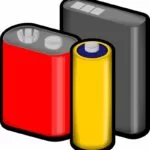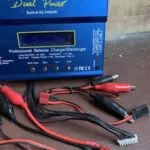How Cold is too Cold for RC Batteries (LiPo&NiMH)

When batteries become too cold, they will not be able to deliver their peak performance.
Batteries are very critical for the efficient operation of RC cars and vehicles. As such, it’s imperative we get to know how cold is too cold for RC batteries to ensure that our RC batteries’ cells are always kept in good shape.
There are two main types of RC batteries, including LiPo and NiMH. Although both battery types can store a certain amount of energy based on their varying capacity, a significant difference exists between them. The dissimilarity between LiPo (Lithium Polymer) and NiMH (Nickel-metal hybrid) lies in the chemical properties that enable the charging of the batteries. In addition, LiPo uses lithium-ion technology, whereas NiMH batteries utilize nickel-based technology.
Now, how cold is too cold for RC batteries? Low temperature affects batteries, but extreme cold is detrimental to their life span.
A very low temperature can negatively impact your RC batteries, and knowing the best temperature for your batteries would help maintain optimal performances. A temperature below 0° F (-20° C) will severely damage your batteries.
What Temp is too Low for RC Batteries?
Perhaps you’re wondering whether there are some levels of temperature that can affect the operational efficiency of your RC batteries. Of course, yes. For example, there is a strong correlation between the discharging rate of Lipo batteries and their temperatures.
When the battery’s temperature becomes 50° F (10° C), there will be a noticeable slight reduction in its performance.
However, a dramatic drop in operation will occur when the battery gets below 20° F (-7° C).
LiPo Operating Temperature Range
Since weather is critical to the performance of LiPo batteries, it’s essential we have a deep knowledge of the various operating temperature ranges.
That said, during summer, the ideal temperature range for operating the batteries should be from 32°F to 113°F (0° to 45°C).
In addition, the LiPo battery charging limit should not exceed 4.22V. Plus, the temperature should not go beyond 45°C when being charged.
NiMH operating temperature range
NiMH batteries are typically known for their long durability, safe operation, and low manufacturing cost.
The operating temperature range for NiMH cells is over 100 °F (-30 °C to + 75 °C).
NiMH batteries are the batteries RC motor use because the temperature range currently achievable by them far exceeds lithium cells.
How does cold affect LiPo and Nimh batteries?
Generally, cold affect LiPo and Nimh batteries alike. Cold affects LiPo and Nimh batteries by reducing the activity of lithium ions, thereby making the battery discharge capacity weak and shortening the use time. That’s to say, the colder the batteries become, the higher the drop in their performances.
Experience has shown that cold causes degraded discharge rating and diminishes run time. In addition, low temp reduces top speed and overall battery power, leading to reduced life expectancy.
Then again, cold affects LiPo and Nimh batteries by increasing the stress level of the RC ESC capacitors leading to potential damage.
At what temperature do RC batteries stop working
Extreme weather can be detrimental to RC batteries’ health and even damage them. Simply put, battery capacity is reduced as temperature goes down and increases as temperature goes up. So if your RC batteries are exposed to a very low temperature, it’s highly probable that they will die despite working fine the previous day. However, RC batteries capacity can drop dramatically and stop working at -22 degrees F (-30 C).
Can LiPo batteries freeze?
LiPo batteries can freeze at temperatures as low as -22°F (-30°C). When LiPo batteries freeze, the batteries’ cells become more fragile and may cause damage to the batteries. Lipo batteries require adequate care to keep them functional.
Does cold weather damage RC batteries?
Yes, cold weather does damage RC batteries, like other batteries. If you expose your RC batteries to a very low temperature, they can be irreversibly damaged.
RC batteries can crack and separate themselves from surrounding materials at below-freezing temperatures, reducing their electric storage capacity.
Can you charge LiPo and NiMH batteries in cold weather?
It’s advisable to charge your batteries at room temperature. Cold generally does not mix well with batteries. The colder it is, the more chances that your batteries would be harmed. Charging batteries in extreme weather is not ideal for optimal battery performance.
Does temperature affect battery charging?
There’s no denying that temperature can significantly affect battery life at varying currents. However, ensure you charge your battery at 10°C-30°C. But, if you intend to charge your battery at a low temperature, use a lower charge current to avoid venting, which causes rapid charge.
More importantly, don’t charge your battery below 0°C to avoid plating, which causes permanent capacity loss.
In addition, battery charging at higher temperatures negatively impacts the life cycle. In other words, the charging capacity is reduced at higher temperatures because the heat causes a false positive, indicating that the battery is fully charged, whereas they are often far below capacity.
Can you store RC batteries in cold weather?
It’s highly not advisable to store batteries in cold conditions because the chemical reactions that form the basis of the functionality begin to wear down and cut short the battery capacity. Always store your battery at room temp.
Should you warm your batteries before running in the cold?
It’s pretty cool to warm your battery before running in the cold to enable them to perform effectively while running.
Lipo and NiMH batteries compared
Below is a table showing the differences between LiPo and NiMH batteries in their charging, operation, and storage temperature.
| LiPo | NiMH | |
| Charging temp | 0°-45°C | 10°C and 40°C |
| Operation temp | -20° and 60°C | 20° to 45 °C |
| Storage temp | 70 °F (21 °C). | 4°F (20°C). |
which one is better for your RC – LiPo or NiMH
Conclusion
Cold temperatures put severe stress on RC batteries. That can account for why the winter is often a catalyst for car battery replacements. Since extreme cold weather is not friendly to RC batteries, it is necessary for RC car owners to know the ideal temperature to charge, operate, and store their batteries. Using your batteries at the recommended temperature will help your batteries operate optimally and last longer. Unfortunately, many RC car owners do not pay attention to this critical part of their car, thereby facing the difficulty of unexpected battery run down.
The bottomline: at a low temperature, you should charge RC batteries at room temperature. The temperature limit should range from 5 ° to 20 ° C., and it’s worth knowing that the charging should not be done in the temperature above 40 °C.
However, experts recommend that batteries should be kept at room temperature.





